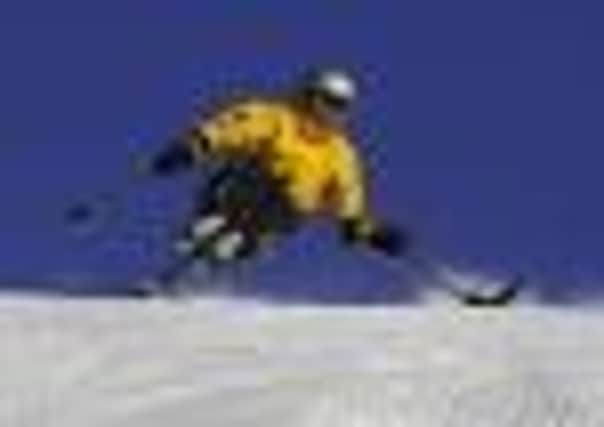Turney’s gold medal dream comes at a cost


However, a lack of funds is something even the determined 31-year-old will always struggle to overcome.
Turney was a leading snowboarder when her ambition to compete for Britain was cruelly shattered on the slopes of Yamagata in Japan, along with her lower spine and some ribs.
Advertisement
Hide AdAdvertisement
Hide AdConfined to life in a wheelchair, Turney watched the Torino Olympics and resolved to become a Paralympic skier.
After a month in a Japanese hospital and rehabilitation back in the UK at Stoke Mandeville, Turney spent the anniversary of her accident up a mountain in Colorado.
Further practice in France and at the snowdome in Milton Keynes then saw her potential spotted by the Great Britain coaches who picked her for their development squad.
And, just four years after becoming paralysed, Turney finished sixth at this year’s Vancouver Paralympics.
Advertisement
Hide AdAdvertisement
Hide AdHowever, in order to continue competing at the highest level, Turney needs to raise £20,000 per season for racing and training.
“Alpine skiing is the least funded of the sports and paradoxically it’s the most expensive,” said Turney, who has moved to Chase Meadow from Milton Keynes to live with her fiance, Pete. “The Talented Athletes Scholarship Scheme is a huge help, but I’m looking for local businesses to sponsor me.”
Turney’s gruelling fitness regime involves cardio-vascular training, weight sessions and prehab balance training in addition to visual imagery aimed at helping her mental preparation.
And she is in no doubt that had she had the same focus and backing in her snowboarding days, she may have gone on to achieve much more.”
Advertisement
Hide AdAdvertisement
Hide Ad“As a snowboarder I had the skills, but I wasn’t structured enough in my approach. The funding wasn’t there, either. I did really well at the British Nationals but there were no talent-spotters.
“Now I’ve got the backing to help me succeed with coaches, psychologists and training camps.”
Sit-skiing requires the skier to be seated in a moulded bucket seat which is mounted to a frame above a single ski.
Ski poles are replaced by two outriggers, to aid balance and turning, but with the skiers reaching speeds of more than 100kph this sport is not for the faint-hearted.
Advertisement
Hide AdAdvertisement
Hide AdMonoskiers compete on the same runs as able-bodied skiers, but lack the television exposure, something Turney believes is a real shame.
“I may be biased but I believe Paralympic skiing is better to watch than Olympic skiing.
“The competitiors are more interesting, you could have someone with one leg, one arm or visually impaired, and there are certainly more crashes.”
Away from the slopes, the former teacher works for the Dame Kelly Holmes Legacy Trust and inspires others by giving motivational talks.
Advertisement
Hide AdAdvertisement
Hide Ad“Positivity is really important. That’s what’s helped me get through it and given me a focus.
“I think the motivation work has also helped, letting me help others.
“I try and teach that whatever you love doing, make clear goals and work really hard to achieve those goals.”
And Turney’s goal?
“I want to qualify for the World Championships in Italy in January and then go all out for the worlds.”
www.annaturney.com